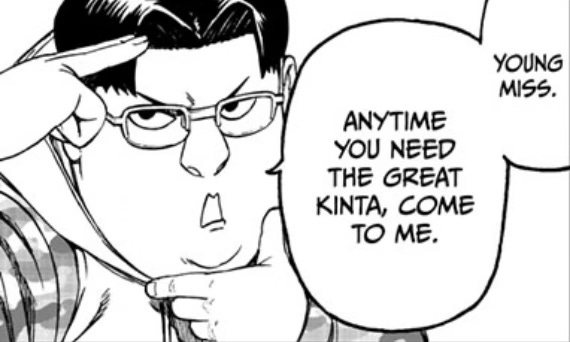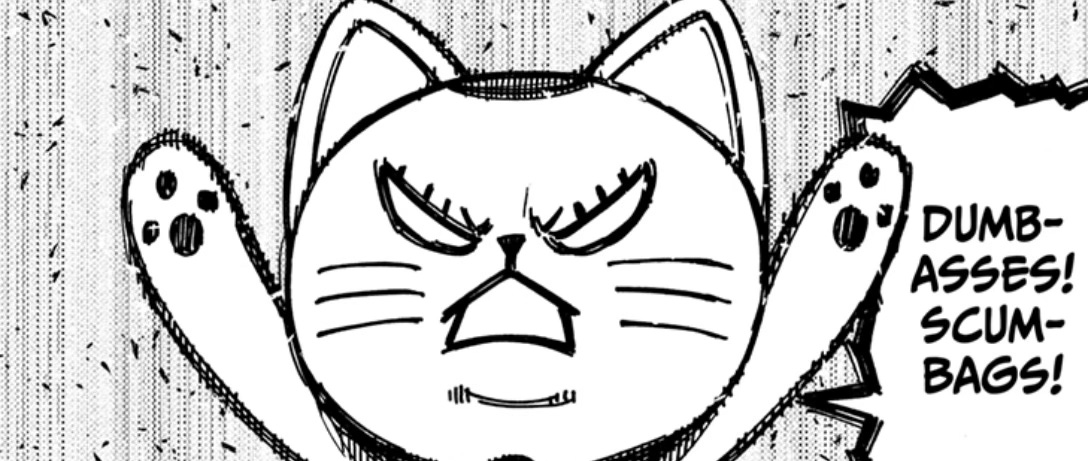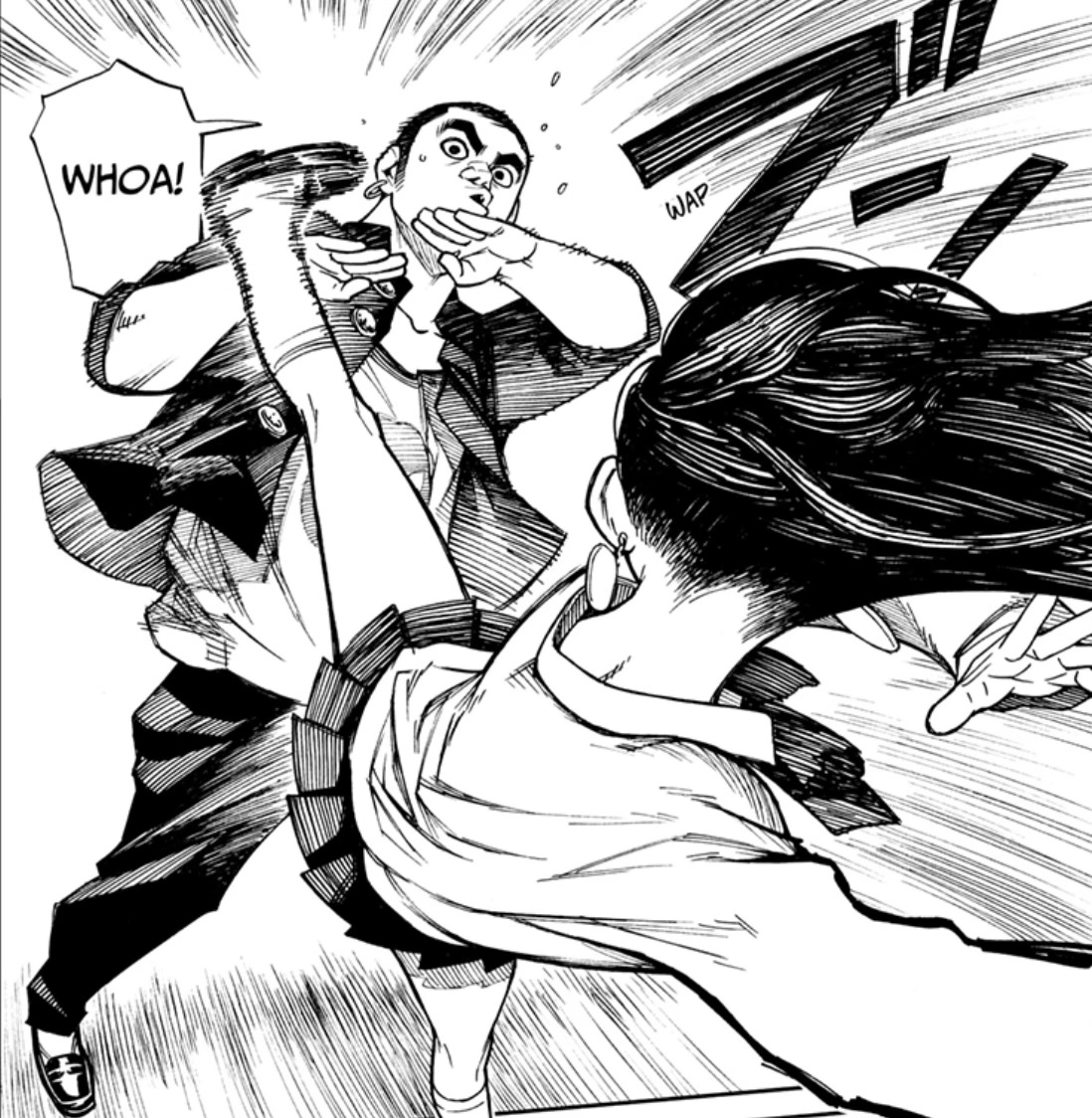Preface!
Fun fact: I have started and deleted this article three times. It’s been sitting in my drafts forever. First it was going to be about Zom100, then Kagurabachi, but now it’s going to be about Dandadan, because turns out Dandadan does it better than either of those two. Also I forgot where I was in Zom100 and Kagurabachi. Oops.
Also, a little behind the scenes at MangaCraft—I have craft elements that I want to write about, but I have to find a manga that does it well first. So there are a lot of drafts chilling in my dashboard waiting for the right manga to connect with it.
The thing is, Dandadan, like Blue Lock, honestly, ticks so many boxes that I could devote an entire month solely to all the things this one series does so well. Maybe I’ll do that. Should I? Okay fine, since you asked nicely.
Maybe.
Preface over.
I always like to say that manga is the best for studying craft because it’s like using a caricature to analyze someone’s features. They may be blown out of proportion, but you absolutely cannot miss what their features are.
Everything in manga is enhanced. With space to spread out eccentric personalities, it’s the perfect playground for a study of the elements of storytelling. Which is where this all begins, my study of ensemble casts and the way these characters complement each other in multitudinous (that’s my favorite fancy word, forgive me) ways.
You’ve probably heard of characters who are foils. If you haven’t, I wrote about it. In short—they are opposites who bring out the best in each other in the story. You can see this in rom-coms (grumpy and sunny), in classic hero journeys (hero and villain) and beyond. But not every foil relationship begins with one and ends with two.
In manga, we get so many great examples of ensemble casts that add up to form a dynamic and complete collection of traits. Why do you think every manga has a big cast? Because when you have the space to have so many characters, they each get their own room to be who they want to be. Which usually involves more caricature comparisons. Manga characters are often eccentric. They have over-the-top and very specific traits that define who they are.
Again, that loops back into the medium they’re in, but as a storytelling component, it means that nearly every reader can find a character they relate to in some way.
And for what it’s worth, let me mention that my whole point in studying manga isn’t to get you to love manga—though that’d be nice too—it’s to show you that the tenets of storytelling in manga make it the most accessible medium to study craft, hence the point of MangaCraft.
That got long-winded, but trust me when I say, I’ve been wanting to write about this for a long time.
Before we get into Dandadan, here’s what you need to know.
First it was Okarun and Momo, then Aira and Jiji, then Sakata, Vamola, Zuma, Class Rep and more. One after another, new characters enter Dandadan with their own unique connection to the supernatural. One by one, the ensemble grows as they continue to help each other combat their supernatural foes and harness their own unique powers.
And that’s all you need to know.
There have been many manga series where a new character enters the story and I wonder why. Either because we just had a new character not long before, or because the current characters haven’t had a chance to establish themselves, or simply because I don’t see what this new character adds to the dynamics of the story.
To be fair, it’s not easy to know when the time is right to bring someone new in, so it’s not like it’s an immediate chiding from me, the reader, if a new character entry doesn’t feel quite right. But that said, when a series does do it right, you can tell.
Dandadan has mastered the introduction and continuation of a hearty cast of characters that, while growing in number, never feels arduous or overbearing. And there are a three main reasons why.
Cadence.
It’s a pretty simple structure, but essentially, each character enters the story at the start of a new arc, they are the focus for that particular arc, and then when their arc is over, they become one of the “crew” and pass in and out of the story. It also sets up the expectation in readers that since we are entering a new arc of the story, we are going to be meeting a new character. This ensures that no character ever feels abrupt or sudden. It’s formulaic, but not in a bad way.
Kinta is a good example of this, really. He’s not a major character. He wants to be, that’s his shtick, and I love him, he’s hilarious. But his involvement ebbs and flows. And that’s how it’s meant to be.
Personality.
Each character has to stand apart from each other character, otherwise, what’s the point? And I find this a particularly remarkable accomplishment for Dandadan because, amidst all its other qualities, it is a comedy. It’s goofy. Having a large cast of goofy characters is difficult. Even in a humor-driven series like One Piece, you still have serious characters like Robin or Zoro to provide an easy contrast. Dandadan doesn’t have serious characters. Not really. Okarun and Momo, the two protagonists, more or less, are the most serious, but they still contribute to the humor.
The fact that we can meet Aira, Jiji, Kinta and Vamola in succession and each of them possess a unique sense of humor that’s completely original to them, is a feat.
Purpose
Along with having traits unique to each character, their purpose, or growth potential, also has to offer something we don’t already have, or add to an existing point. This one is a bit more fluid, because we very often see an ensemble grow on their way to accomplish the primary quest, but each character has to have their own individual growth, or potential to grow, and Dandadan—surprise!—excels at that as well. And they do so by leaning into their own absurdity.
Vamola looking to heal from her intergalactic past, for instance. Or Sakata insisting on being cool. Little character traits or quirks that frame them as their own unique entity among the big push of the series. Everyone has their own wants and needs outside of the main plot.
The thing about all of these, too, is that the more they nail these aspects, the more we, as readers, look forward and revel when a new character enters the cast. It’s this healthy circle of life, for every character introduced to grand effect, the next one is already set up to be a tremendous success too because the momentum snowballs.
Another series that does this well—surprise!—My Hero Academia. I wrote about how that entire series essentially has no flat characters not long ago, and I stand by that. The difference between what they have and what Dandadan has, however, is that My Hero Academia has all these characters all at once, we get to see them and grow alongside them.
Dandadan’s variant is that each character enters the story one at a time, perfectly spaced. Almost like that scene in Lord of the Rings, when Frodo is in bed after saving the world, and each member of the fellowship walks in one at a time, as if they’re waiting in line outside, waiting for their moment to enter.
Except Boromir of course, he’s dead.
As I write this, a new character is entering the scene in Dandadan. I can’t wait to get to know her, because the track record is impeccable. Not a single character has ever been a burden. Ever. And that’s a feat.






THIS paragraph here:
"There have been many manga series where a new character enters the story and I wonder why. Either because we just had a new character not long before, or because the current characters haven’t had a chance to establish themselves, or simply because I don’t see what this new character adds to the dynamics of the story."
I can't even begin to describe how much I agree with this.
Love this! I am all about ensemble, as you well may know with my love for My Hero Academia :)